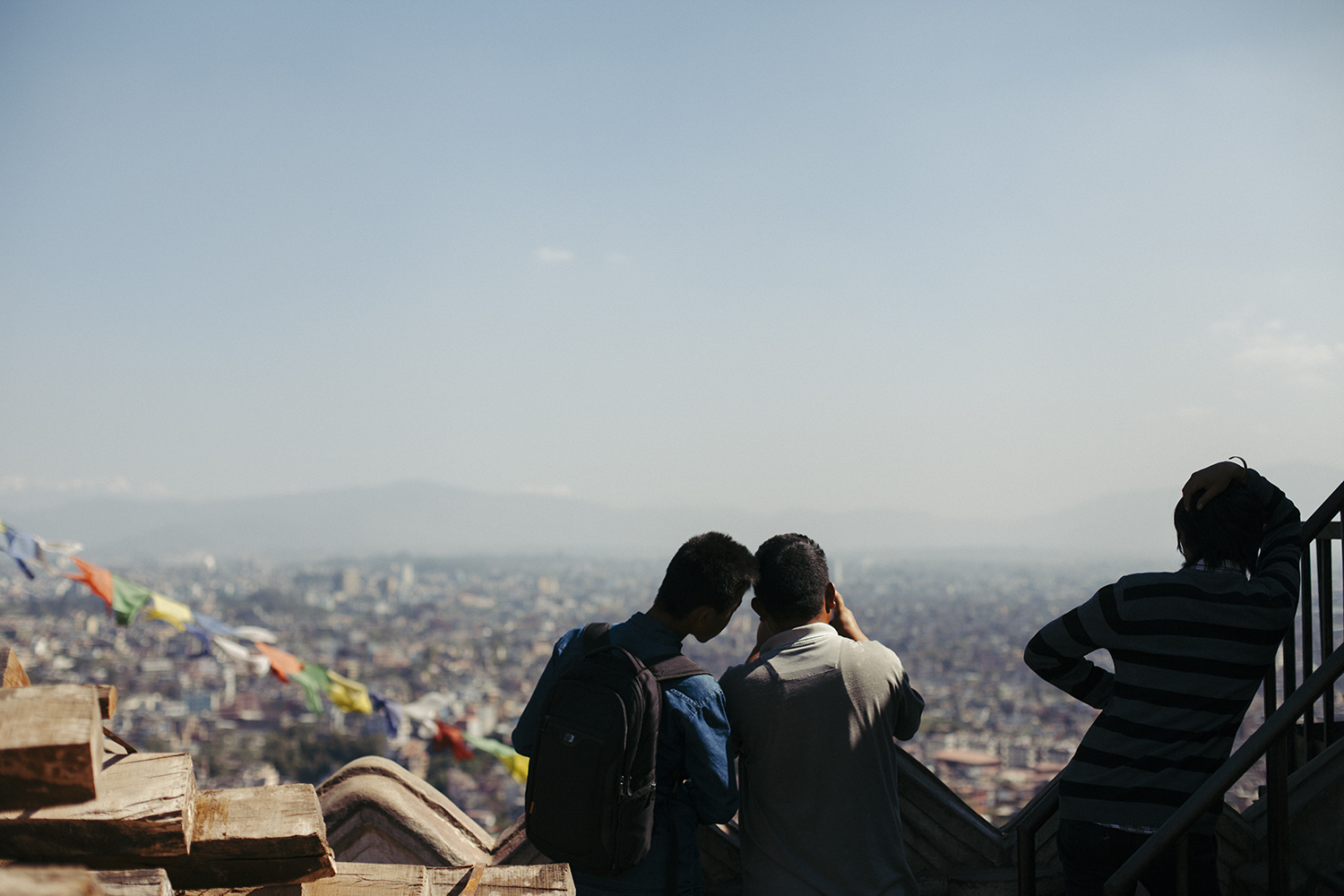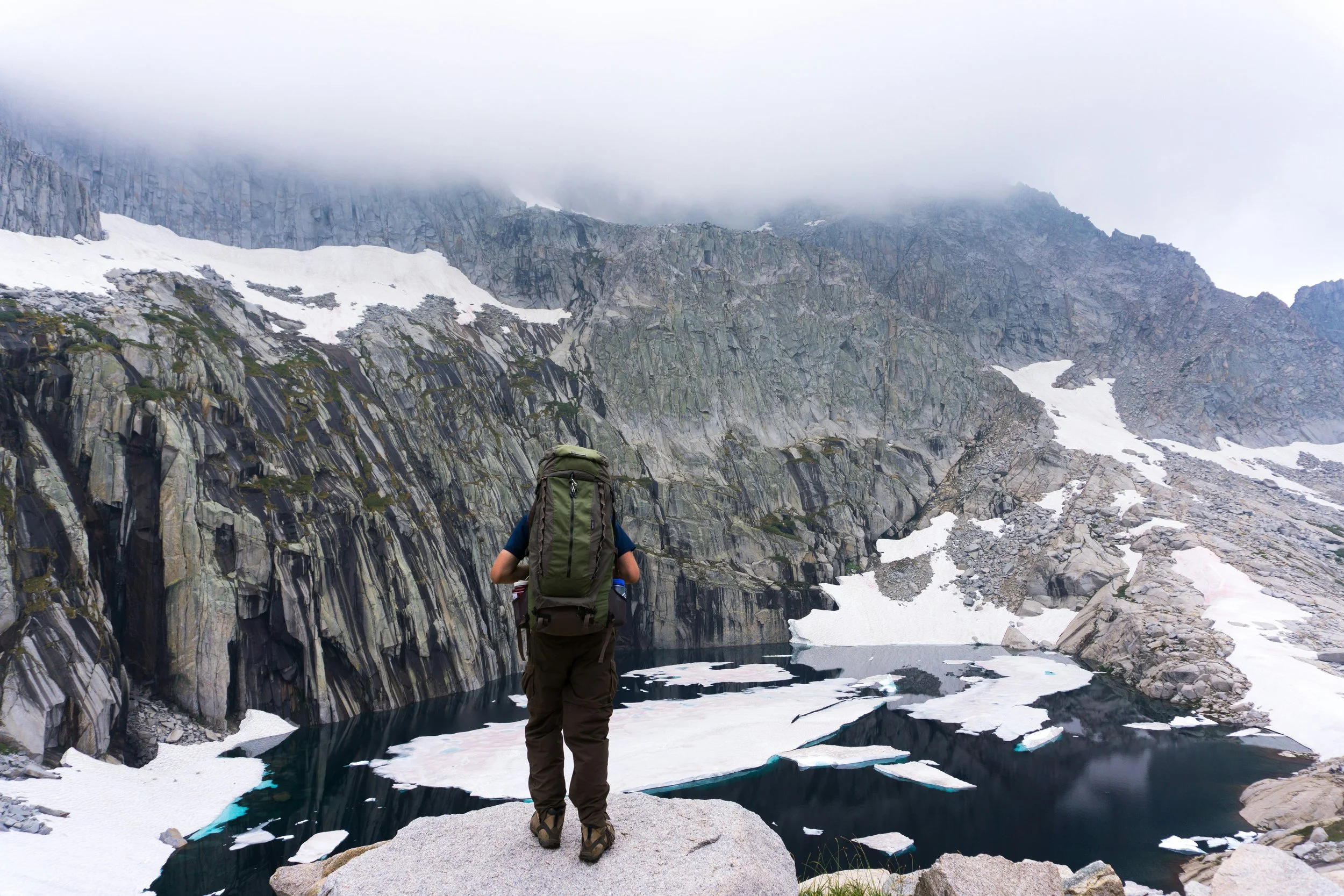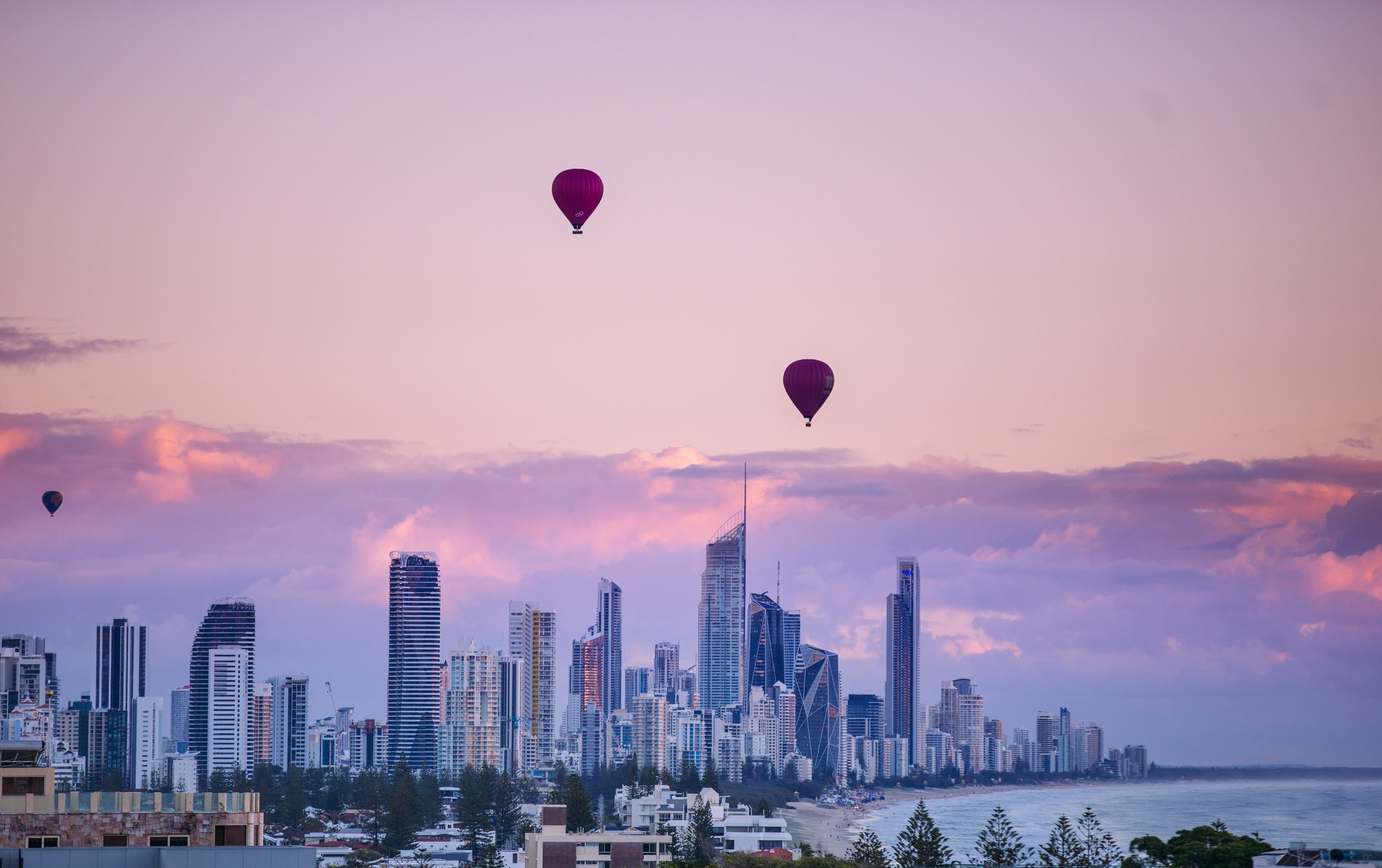We followed my Nepalese friend, Bichitra, as he walked clockwise around the little sacred stupa. He told us earlier that the size or the location of the stupas don’t matter, they can be really tiny and embedded in the ground, but we always should walk clockwise, if we want to keep our good karma.
Bichitra is a Hindu, but it’s not the only religion in Nepal. Buddhists, Christians and Muslims – they also share this country. There are many temples in Kathmandu, and each time we visited one, I kept asking Bichitra whether they were Hindu or Buddhist. His answer was usually the same: the two religions live in harmony and the sacred place was designed for both of them.
The religion plays such an important role in the everyday life of the Nepalese people. The monuments sacred to many gods can be seen on almost every street. When we travelled across Nepal and could see nothing but rice fields and random huts here and there, eventually there would have to be a stupa standing out somewhere out of the green lands.
The unity of the Nepalese nation is not only seen in the religion – there are over 100 different ethnic groups, as Bichitra told us, in Kathmandu Valley itself. Couple of times I asked him about the Nepalese version of an English word, but he would first ask me if I want to know the word in Nepali or Newari language.
Newars are believed to be the first civilization and the creators of the Kathmandu Valley. Today there are over 1 million of them. Bichitra is one of them and he uses both of the languages, Nepali and Newari, in his everyday life. When he speaks to his brother, he uses Newari, but when he speaks to his wife, he uses Nepali. His 2 year old son, Prachit, mixes the words from both of the languages whilst he learns how to speak.
Nepal boasts hundreds of languages and ethnicities, which vary from region to region. What might seem distinctive about the Nepalese, is their belonging to a local community. They seem to create a diverse nation, however ethnic and religious differences are not important whilst being a part of the local society. As we strolled along Bichitra’s village, he pointed out a terraced area, looking like a balcony placed on the ground floor. It was a place for the elderly to gather and spend their time together. Not only do they spend time together, but with each step around Kathmandu, it was obvious that they pray together as well.
My favourite place in Patan (a district of Kathmandu where we stayed) was a temple called Bangla Mukhi. The women in red saris, men squatting around the fire, children running around and the sounds of bells cutting through people’s singing – all of these things in a complex of big and small temples, which we walked around (clockwise, of course!).
The round bowls full of fire, placed on the ground, particularly attracted my attention. Bichitra told me to grab a wooden stick laying down next to them, and put it in the fire – this will bring me a good karma. As I got to know, ‘the bowls on fire’ are called Lakhbatti (lakh means 100 thousands and batti means lights). People light them up wishing for fulfillment of their personal desires and prosperity for their families. Not far away, I could spot another ‘fireplace’. This one was bigger and people gathered around it in a circle. It was called yagya (home) and was lit up to achieve spiritual clarity of the area, make the evil souls disappear and in the intention of world peace.
Besides Bangla Mukhi, there are many more signs of the tradition and history being ever present in the life of the Nepalese people. When Bichitra told me one of the stories, which seems to connect the history with the current times, it made my spine tingle!
The empty column standing in the main square of Patan was once a place where the monument of King Yoga Narendra Malla stood. The King died in the 16th or 17th century, but before he did, he ordered the people to build a statue in his memory. He said: “Don’t consider me dead, unless the bird on the top of my statue flies away or the elephant on the top of the stone tomb goes to drink water”. It’s believed that for centuries people paid their respects to his monument and honoured his spirit. They considered his words to be trivial because the heavy stone monuments of a bird and an elephant were obviously not going anywhere. However, during the earthquake in 2015, the King’s statue fell down, together with the bird placed on top of it… and the elephant’s head rolled down to the nearby water pool! Since the earthquake, people stopped worshipping the King – they now consider him dead as his words ‘came true’.
Another important place in Kathmandu Valley, which might be considered as a symbol of the religious and ethnical variety, is Stupa Swayambhunath. The place is worshipped by Buddhists, however Hindus also treat it with deep respect and admiration. The legend has it that the Kathmandu Valley was once a lake with the lotus flower growing on the foot of the little hill in the middle of it. Around the 5th century, Manjushri, who was a bodhisattva (in short a former epitome of Buddha), decided that the place was worth a pilgrimage. This is why he drained the water out of the valley and made it possible for people to reach the hill in the middle of it, and eventually build the temple, which is worshipped to this day.
Just behind the Stupa Swayambhunath one can find Next Generation Nepal Children's Home. But wait, what does it have to do with the ethnicity and religion of the Kathmandu Valley though? The cultural and religious variety are a wonderful thing, here, in the Valley, however not everything is as it seems.
As the NGN states, there are over 16,000 children in Nepal, who live in 'orphanages'. About 80% of these so-called 'orphanages' exist in the touristy areas of the country, with Kathmandu topping the list. However, only one third of the children are thought to be real orphans. The rest of them are suspected to be the victims of child trafficking.
During the 10 years of the war that ended in 2006, as well as the earthquakes, a lot of families from the villages, which were touched by the conflict and poverty, decided to 'send' their children to the city in hope for a better life and education. The traffickers sensed a chance for business and started to charge the village families large sums of money in exchange for taking their child (or children) to the capital city. A child's papers were mostly falsified in order to prove that they were real orphans. Some of those, who were taken away at a young age, believed their parents to be dead after seeing government stamped death certificates.
The tourists coming to Nepal for a life-changing experience then felt great for helping little orphans and donating money for a good cause - the business kept booming and parentless children kept appearing in the overcrowded and horribly-maintained orphanages. Most of the time though, the money did not go to the upbringing of the kids, but to the pockets of the traffickers.
Not only did this result in destroying family bonds and many children's lives, it also caused the appearance of many different ethnicities in Kathmandu, originating from distant and village regions of Nepal. Unfortunately, the cultural variety was in this case a side effect of unscrupulous man-doing. Although in the scale of Kathmandu's whole population, the number of trafficked children might not have affected the amount of ethnicities in a direct way, this is something that is happening and everyone needs to be aware of.
Luckily, NGN has reconnect over 560 children with their families so far. They are working extremely hard to educate the society of voluntourism and the impact some volunteers can have on sustaining the vicious circle of orphans.
Even though Kathmandu has its problems, like every big city in the world, I don't think there is anywhere in the world where one can find such a beautiful variety of people living in harmony with each other. Its cosy atmosphere is one of a kind, and the history literally creeps out onto the streets, where the legends are still alive. If we, the travellers and tourists, only admire and don't touch, Kathmandu valley will hopefully stay as precious as it is, for the next ages to come.

















































